September 2, 1910 – Cities Service Company incorporates –
Henry Doherty organized the Cities Services Company as a public utility holding company in Bartlesville, Oklahoma. Doherty bought producing properties in Kansas and Oklahoma as he acquired distributing companies and linked them to natural gas fields.
In 1915, a Cities Service subsidiary discovered the 34-square-mile El Dorado oilfield. In 1928, another subsidiary completed the discovery well of the Oklahoma City oilfield.

Cities Service Company subsidiaries discovered major Mid-Continent oilfields.
Federal court mandates in 1940 resulted in Cities Service’s divestiture of its public utilities, and in 1959 the remaining companies were reformed as Cities Service Oil Company, which changed its marketing brand to Citgo in 1964.
After being acquired by Occidental Petroleum in 1982, Citgo was acquired by the Venezuela state-owned oil company Petróleos de Venezuela (PDVSA) in 1990.
Learn more in Cities Service Company.
September 2, 1918 – Desdemona Oilfield adds to North Texas Boom
A third oil boom arrived in Eastland County, Texas, when the Hog Creek Oil Company exploratory well at Desdemona blew in at 2,000 barrels of oil a day — thrilling the venture’s investors. Production from the new oilfield, which joined prolific fields at Breckenridge (1916) and “Roaring Ranger” (1917), would peak at more than 7.3 million barrels of oil in 1919.
“By 1919 the Desdemona field was probably the second largest in the oil belt, and the Hog Creek Oil Company’s stockholders were able to sell their $100 shares for $10,250 each,” noted Edwin Cox in his 1950 History of Eastland County, Texas.
Thanks to its oil leases, Eastland County’s Merriman Baptist Church would be declared the richest congregation in America.
September 2, 2009 – Gulf of Mexico Depth Record
BP discovered an oilfield 250 miles southeast of Houston in the Gulf of Mexico — and set a world depth record by drilling 30,923 feet into seabed from a platform floating more than 4,130 feet above.
The Tiber Prospect field — in 2009 estimated to contain more than three billion barrels of oil — was drilled by the Deepwater Horizon, which later was moved to a new site and destroyed in the deadly explosion and oil spill of April 2010. Learn about other ultra-deep wells in Anadarko Basin in Depth.
September 4, 1841 – “Rock Drill Jar” Patent for Percussion Drilling
Early drilling technology advanced when William Morris, a driller in West Virginia, patented a “Rock Drill Jar.” It was an innovation he had been experimenting with while drilling brine wells.
“The mechanical success of cable-tool drilling has greatly depended on a device called jars, invented by a spring pole driller,” according to historian Samuel Pees, who in 2004 noted Morris began using the technology as early as the 1830s.
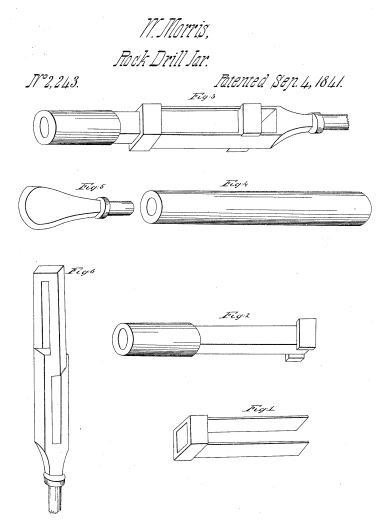
Drill jar technology improved efficiency for drilling brine wells — and later, oil wells.
For more advanced cable tools, Morris patented a “manner of uniting augers to sinkers for boring,” with the upper link of the jars helping the lower link to strike the underlying auger stem on the upstroke. This upward blow could dislodge the bit if it was stuck in the rock formation. Cable-tool drillers would soon improve upon Morris’ patented jars.
Learn more in Making Hole — Drilling Technology.
September 4, 1850 – Illuminating Chicago Streets
The Chicago Gas Light & Coke Company delivered its first commercial gas processed from coal. “The gas pipes were filled, and the humming noise made by the escaping gas at the tops of the lamp-posts indicated that everything was all right,” reported the Gem of the Prairie newspaper. “Shortly afterward the fire was applied and brilliant torches flamed on both sides of Lake Street as far as the eye could see and wherever the posts were set.”
By 1855, almost 80 miles of pipeline would be installed for about 2,000 manufactured gas consumers in Chicago. The first U.S. public street lamp fueled by manufactured gas illuminated Baltimore, Maryland, in 1817 (see Illuminating Gaslight).
September 5, 1885 – Birth of the “Filling Station” Gas Pump
Modern gasoline pump design began with inventor Sylvanus F. (Freelove) Bowser, who sold his first pump to a grocery store owner in Fort Wayne, Indiana. Designed to safely dispense kerosene as well as “burning fluid, and the light combustible products of petroleum,” Bowser’s pump included a container holding 42 gallons. The pump used marble valves, a wooden plunger, and a simple, upright faucet.
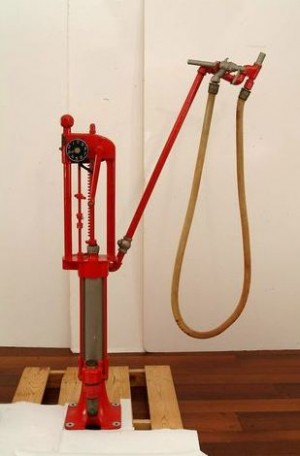
The 1916 Bowser gas pump included a “clock face” dial to measure pumped gas. Photo courtesy Smithsonian Institution.
Thanks to the pump’s success at Jake Gumper’s grocery store, Bowser formed the S.F. Bowser Company and patented his invention in 1887. Within a decade — as the automobile’s popularity grew — Bowser’s company has added new pump designs. By 1905, the S.F. Bowser “Self-Measuring Gasoline Storage Pump” became known to motorists as a “filling station.”
The Bowser gas pump included a hand-levered suction pump and a hose attachment for dispensing gas. As other pump manufacturers arrived, Fort Wayne became known as the “Gas Pump Capital of the World.”
Learn more in First Gas Pump and Service Station.
September 5, 1927 – Schlumberger Brothers test Electric Logging Tool
An electric well-logging tool was first applied at Pechelbronn, France, after brothers Conrad and Marcel Schlumberger modified their surface system to operate vertically in a well.
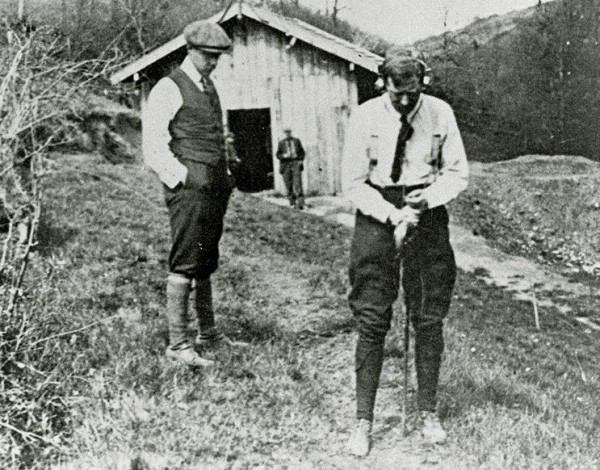
Conrad Schlumberger, using very basic equipment, in 1912 recorded the first map of equipotential curves near Caen, France.
Conrad Schlumberger had conceived the idea of using electrical measurements to map subsurface rock formations as early as 1912. After developing an electrical four-probe surface approach for mineral exploration, the brothers created the electric downhole well log.
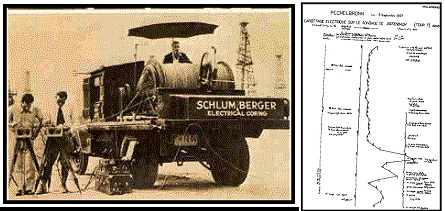
Conrad and Marcel Schlumberger tested their electronic logging tool in 1927, one year after founding the world’s first well-logging company. Photo and image courtesy Schlumberger Ltd.
Lowering their new tool into a well, they recorded a single lateral-resistivity curve at fixed points in the well’s borehole and graphically plotted the results against depth — creating a well log of geologic formations. Changes in subsurface resistance readings showed variations and possible oil and natural gas-producing areas.
The brothers’ technological breakthrough would lead to Schlumberger becoming the world’s first well-logging oilfield service company.
September 5, 1939 – Young Geologist reveals Mississippi Oilfield
Union Producing Company completed its Woodruff No. 1, the first commercial oil well in Mississippi. Drilled at Tinsley, southwest of Yazoo City, the well produced 235 barrels of oil a day from a depth of 4,560 feet in a sandstone later named the Woodruff Sand. Fieldwork by geologist Frederic Mellen led to the Tinsley oilfield discovery.

Fred Mellen was elected president of the Mississippi Geological Survey in 1946.
While working on a Works Progress Administration (WPA) project, Mellen earlier found indications of a salt dome structure similar to the giant Spindletop field of 1901 in Texas. The 28-year-old geologist urged more seismographic testing, and Houston-based Union Producing Company leased about 2,500 acres at Perry Creek.
Mellen’s original WPA project had been a clay and minerals survey, “to locate a suitable clay to mold cereal bowls and other utensils for an underprivileged children’s nursery.” Instead, he launched Mississippi’s oil industry.
Learn more in First Mississippi Oil Wells.
September 7, 1917 – Oilfield Legacy of Texas Governor Hogg
After drilling 20 dry holes, the Tyndall-Wyoming Oil Company completed the No. 1 Hogg well 50 miles south of Houston. Within four months, a second well was producing about 600 barrels a day. The discoveries ended a succession of dry holes dating back to 1901 — when former Texas Governor James “Big Jim” Hogg paid $30,000 for the lease. He also helped launch the Texas Company (Texaco).
Gov. Hogg died 11 years before the Tyndall-Wyoming Oil Company wells found oil in the giant West Columbia oilfield. Fortunately for his family, he stipulated in his will that the mineral rights should not be sold for at least 15 years after his death.
Learn more in Governor Hogg’s Texas Oil Wells.
September 7, 1923 – California Oilfield discovered at Dominguez Hills
Maj. Frederick Russell Burnham discovered oil in Dominguez Hills, an unincorporated area of Los Angeles County, California. His well produced about 1,200 barrels of oil a day from a depth of about 4,000 feet. Maj. Burnham, a decorated soldier in both the U.S. and British armies, was once known as “King of the Scouts.”
The Burnham Exploration Company and partner Union Oil Company of California opened the Dominguez Hills oilfield, “a two-square-mile, two-mile deep stack of eight producing zones.”
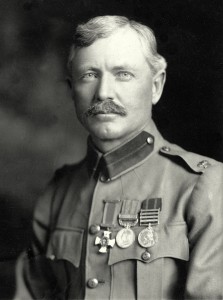
Maj. Frederick R. Burnham in his British Army uniform, 1901.
The region was named for a Spanish soldier who in 1784 received a land grant for grazing cattle. “But family fortunes truly took off with discovery of oil in the 1920s, first in the Torrance area and then, most resoundingly, on Dominguez Hill itself,” explained a California State University historian in 2007.
By 1933, Maj. Burnham’s petroleum exploration venture and Union Oil had paid more than $10 million to stockholders.
Learn more California history in First California Oil Wells and Discovering Los Angeles Oilfields.
September 8, 1891- Patent issued for “Flexible Driving Shafts”
The modern concept of horizontal drilling may have begun with 19th-century patents by John Smalley Campbell of London. After receiving a British patent for his “useful improvements in flexible driving shafts or cables” in 1889, Campbell received a U.S. patent (no. 459,152) for his drilling method.
While Campbell described the patent as ideal for dental engines, “the patent also carefully covered use of his flexible shafts at much larger and heavier physical scales,” reported oil historian Stephen Testa in a 2015 article for Pacific Petroleum Geology. “The modern concept of non-straight line, relatively short-radius drilling dates back at least to September 8, 1891.”
_______________________
Recommended Reading: The fire in the rock: A history of the oil and gas industry in Kansas, 1855-1976 (1976); Early Texas Oil: A Photographic History, 1866-1936
(2000); History Of Oil Well Drilling
(2007); Street Lights of the World
(2015); Vertical Reefs: Life on Oil and Gas Platforms in the Gulf of Mexico
(2015); Drilling Technology in Nontechnical Language
(2012); An Illustrated Guide to Gas Pumps
(2008); Schlumberger: The History of a Technique
(1978); Oil in the Deep South: A History of the Oil Business in Mississippi, Alabama, and Florida, 1859-1945
(1993); California State University, Dominguez Hills
(2010). Your Amazon purchase benefits the American Oil & Gas Historical Society. As an Amazon Associate, AOGHS earns a commission from qualifying purchases.
_______________________
The American Oil & Gas Historical Society (AOGHS) preserves U.S. petroleum history. Please become an annual AOGHS supporter today. Help us maintain this energy education website and expand historical research. For more information, contact bawells@aoghs.org. Copyright © 2024 Bruce A. Wells. All rights reserved.



